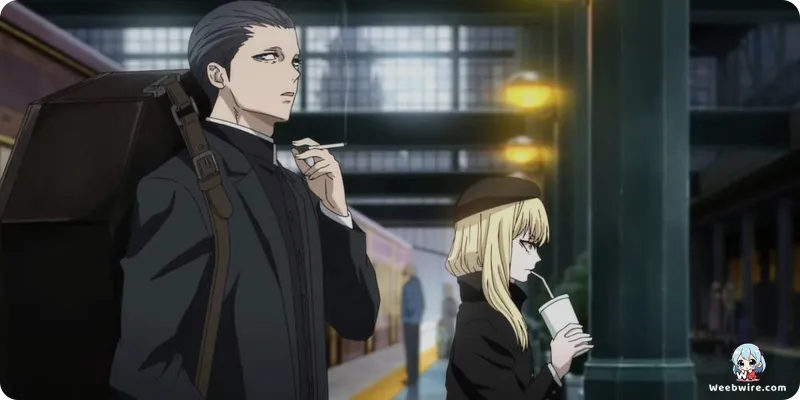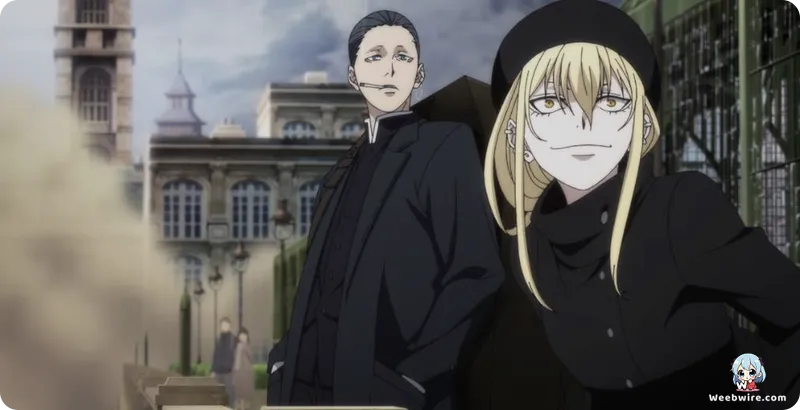Unlocking the Grimoire: Why 'The Witch and the Beast' is a Dark Fantasy Must-Watch

In a landscape brimming with fantastical narratives, The Witch and the Beast has emerged as a dark fantasy adventure that has not only enthralled audiences but also redefined expectations with its intricate layers and distinct visual identity. While its compelling duo, Ashaf, the enigmatic sorcerer bearing a coffin, and Guideau, the ferocious girl with beastly eyes, initially draws viewers in, the true brilliance of the series lies in its masterful subversion of tropes and the meticulously crafted world-building that often goes unacknowledged.
This captivating anime boldly reimagines classic fairy tale archetypes. Instead of a vulnerable maiden, we encounter Guideau, a powerful figure cursed to a bestial form, actively pursuing a 'witch' to break her enchantment. Complementing her is Ashaf, a sorcerer, a role typically associated with malevolence, who is instead portrayed as a composed, polite, and guiding presence navigating a realm rich with magical complexities and moral ambiguities. This immediate inversion of traditional roles establishes a uniquely refreshing tone, prompting viewers to reconsider their preconceived notions of heroism, villainy, and the very essence of magic itself.
Visual Fidelity and Artistic Vision
Kousuke Satake’s original manga is celebrated for its exquisite line work, detailed character designs, and an omnipresent gothic atmosphere. Translating this highly stylized aesthetic into fluid animation presented a significant challenge for Yokohama Animation Lab, a task they executed with remarkable fidelity. Their commitment to preserving the manga’s gritty, dark fantasy feel is evident in the precise rendering of magical effects, the nuanced character expressions, and the atmospheric environments that define the series. This dedication ensures the anime’s visual language remains deeply rooted in Satake’s original vision, offering a rewarding experience for both seasoned manga enthusiasts and new viewers alike.

Complex Protagonists and Dynamic Interactions
Guideau’s beastly curse transcends a mere plot device; it serves as a profound exploration of identity and the inherent weight of immense power. Her raw strength and impulsive nature stand in stark contrast to Ashaf’s composed and mysterious demeanor. This dynamic, built on mutual necessity and a shared, albeit distinct, quest for answers, forms the emotional core of the series. Their interactions, a blend of dry wit and genuine concern, gradually unveil layers of their pasts and motivations, crafting protagonists far more complex than typical fantasy archetypes.
Ashaf’s signature coffin is more than a mere prop; it functions as a versatile mobile arsenal and a potent symbol of his enigmatic role within the magical world. Its contents frequently reveal unexpected tools, arcane artifacts, or even other characters, injecting a constant element of surprise, dark humor, and strategic depth into the series’ many confrontations.
A World of Moral Ambiguity
The world of The Witch and the Beast deviates from a conventional high fantasy setting with clear-cut good and evil. Instead, it’s a grim, often morally ambiguous domain where magic is both wondrous and terrifying. The boundaries between what constitutes a 'monster' and 'humanity' are perpetually blurred, reflecting Satake’s nuanced portrayal of morality. This intricate world-building, coupled with a compelling ensemble of supporting characters, provides a rich backdrop for Ashaf and Guideau’s perilous journey.
The series often employs a non-linear or episodic structure in its initial arcs, with Ashaf and Guideau addressing various cases involving different witches. This narrative choice facilitates expansive world-building, introducing a diverse array of fascinating magical individuals, organizations, and unique magical systems. Each seemingly self-contained case subtly contributes to the overarching mystery surrounding Guideau’s curse and the larger forces at play within their enigmatic world.
Yokohama Animation Lab's Commitment
Yokohama Animation Lab’s decision to adapt The Witch and the Beast underscores their commitment to bringing visually distinctive and narratively complex manga to the screen. Their portfolio consistently demonstrates a willingness to tackle diverse genres and art styles, making them an ideal choice for translating Satake’s unique vision into animation. The series stands as a testament to their ability to capture the essence of a beloved manga while delivering a fresh and engaging animated experience. It is not merely a tale of monster hunting; it is a profound philosophical inquiry into the nature of power, identity, and the relentless pursuit of truth in a world veiled in mystery and magic.
Credits
The Witch and the Beast
Author
Kousuke Satake
Cover Art
Kousuke Satake
Studio
Yokohama Animation Lab
Publisher
Kodansha
Producers





